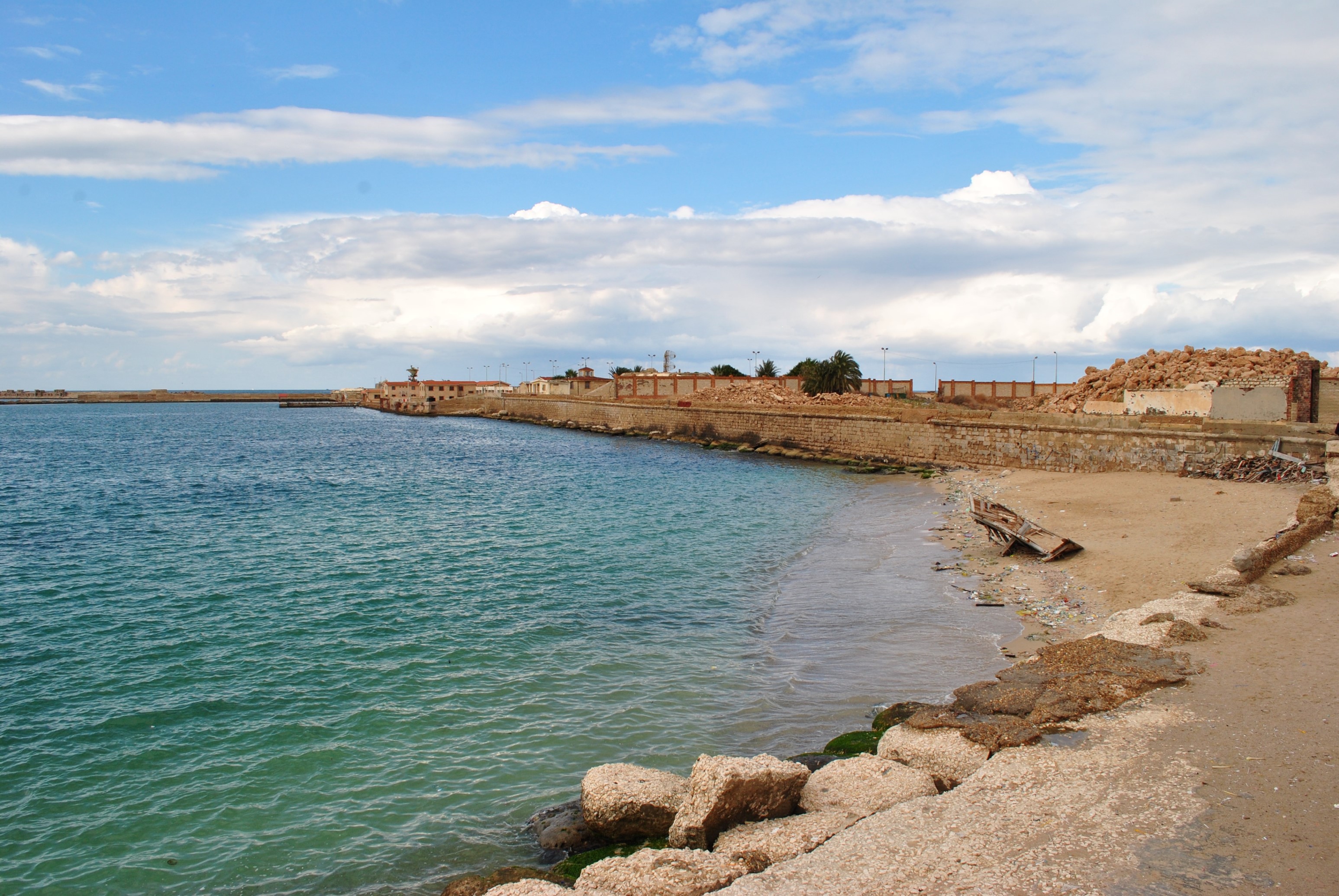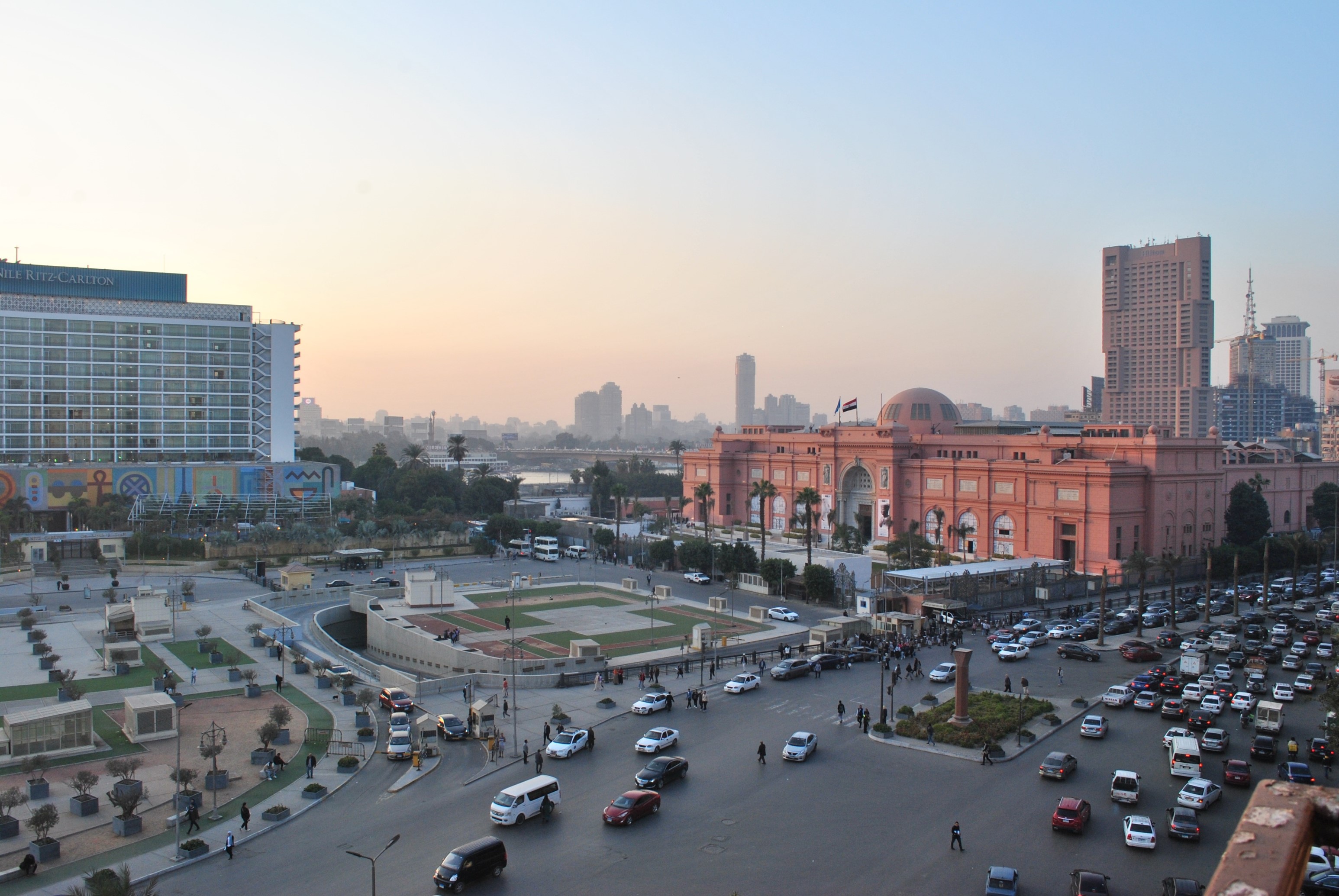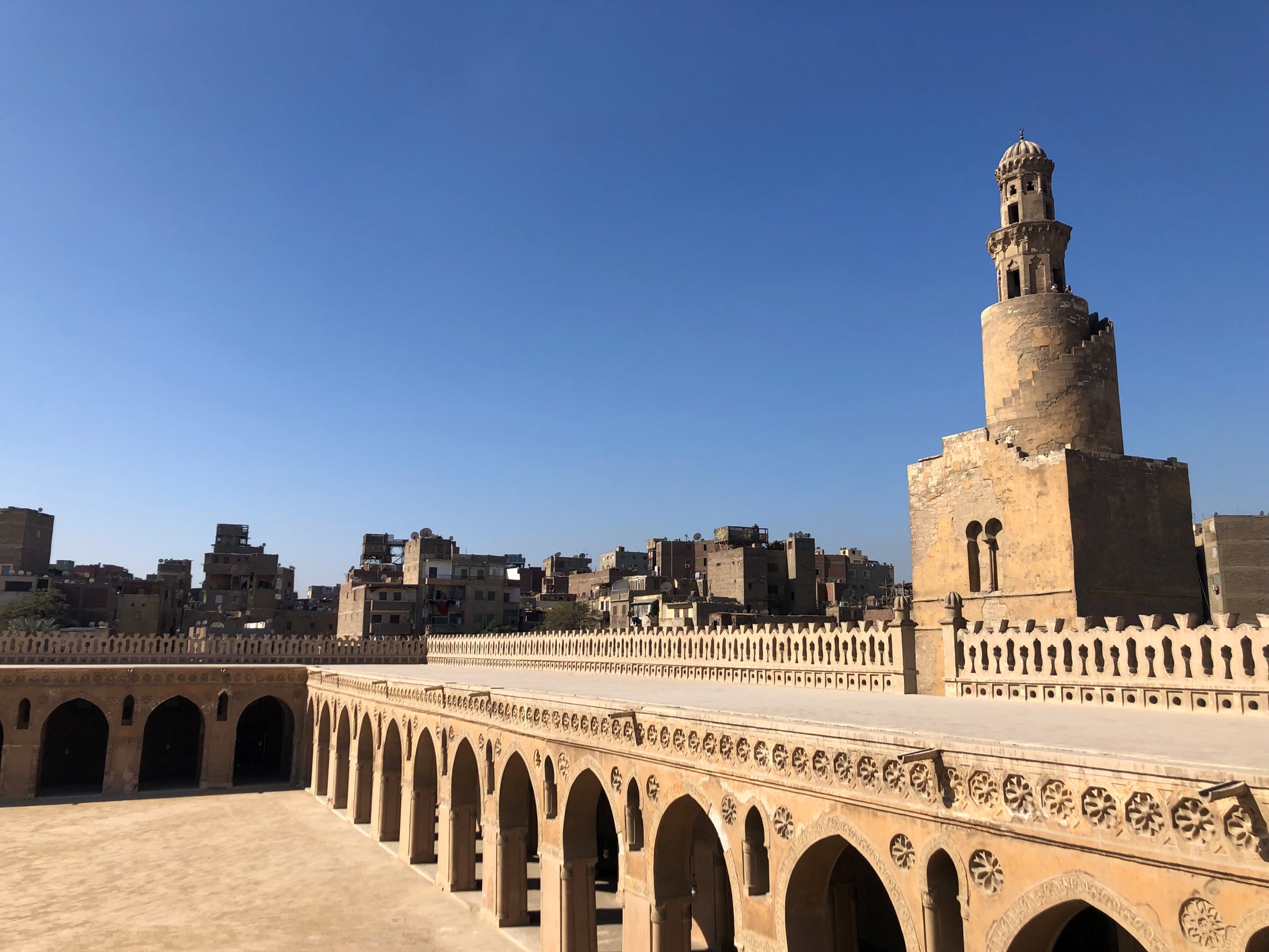A private members-only tour with Ancient World Tours
Escorted throughout by Dr Carl Graves, Director of the Egypt Exploration Society
In this special tour, exclusively for members of the Egypt Exploration Society, we will explore tales of lost places in Egypt. Some lost in myth, others known and since lost, and others simply forgotten.
This adventurous tour will focus on Lower Egypt, from the Faiyum oasis to the coastline of the Mediterranean taking in missing tell sites, submerged cities, and yet-to-be discovered labyrinths. Those wishing to travel should be aware that some excursions will include extensive walks over uneven ground. Strong footwear and walking aids, if required, are recommended throughout. A tour of the lost cities of Upper Egypt will follow.
Following on from a successful online course delivered in 2023, Dr Carl Graves will accompany intrepid travellers providing insights into the hidden stories of the sites on the trip, the origins of the locations, and how they were discovered.
Carl gained his PhD from the University of Birmingham in 2017 on the subject of Middle Egyptian landscapes. His previous research focused on settlement archaeology and landscapes of Egypt and Nubia teaching several courses on the subject for the EES. He has worked at the Egypt Exploration Society since 2013 and became Director in 2019.
NOTE: You will need to use the following password to access the AWT website: BUBASTIS
If you have any questions then please do not hesitate to contact AWT directly. Please note that you must be a current Member of the Egypt Exploration Society in order to join this tour. If you're not yet a Member, then please consider joining/renewing online here.

Exploring the remaining monuments of ancient Alexandria on the banks of the Mediterranean, we will consider what might be left to find in this bustling metropolis.
Itinerary
Day 1 - Thursday 27th March 2025
We take our direct flight from Heathrow to Cairo and on arrival we transfer to the Meridien Hotel at the Airport. We check in for one night on room and breakfast basis.
Day 2 - Friday 28th March
We begin our quest for lost cities in the Egyptian Delta. After breakfast we drive to the lovely coastal city of Alexandria. We travel with a lunchbox from our hotel today and, during our journey, we will pass the flat plains of Lower Egypt, home to half of Egypt’s population today but once largely uninhabitable. Drainage during the Pharaonic period and later resulted in enormous cities being founded here, though they’re often hidden from view today. We head first to the coastline where the famed city of Rashid (Rosetta) now guards the mouth of a deltaic branch of the river Nile. It was here, in 1799, that Napoleonic troops discovered the Rosetta Stone (Hagar Rashid) – the key to understanding ancient Egyptian language. But the reused stones in Qaitbey Fort/Fort Julien were testament to a much older and monumental past in this region, a past that comes down to us through Egypt’s later constructions. We will have time to explore the old town with its lovely Ottoman houses and then check in to the 5-star deluxe Helnan Palestine Hotel close to the famous ‘Montaza Royal Palace’ one of Alexandria’s famous landmarks for two nights on room and breakfast basis. (BL)
Day 3 - Saturday 29th March
This morning, we travel across the Mediterranean coastline to the ancient city of Abusir, usually known by its Roman name, Taposiris Magna. Our special permit means that we can explore the monumental temple, dedicated to the god Osiris, dating to the Ptolemaic Period and thought to be the location of the tomb of Cleopatria VII by some scholars. East of the temple is a tomb marker modelled on the famous Pharos of Alexandria. Though the site is dominated by the temple and cemeteries, it was once a burgeoning settlement connected to Alexandria to the east and straddling the narrow ridge between the Mediterranean and Lake Mareotis. The site serves as an example of how the remains of daily life are often forgotten or ignored in our search for monumental treasures.
In the afternoon we will explore the ancient city of Alexandria, modern Egypt’s second largest city. Alexandria spreads across the northern coastline and in ancient times was the jewel of the Mediterranean, one of the largest cities of the Classical and Byzantine world. Founded by Alexander the Great after his conquest of Egypt, it blended Egyptian traditions with Classical art and architecture, housing a diverse population migrating there from across the eastern Mediterranean. We will explore tales of its foundation and ultimate demise as we visit some of the key archaeological sites of the city including the catacombs of Kom el-Shoqafa, the Serapeum (including so-called ‘Pompey’s Pillar’), and the settlement remains at Kom el-Dikka. Looking out across the Portus Magnus from the fortress of Qaitbey, we can ponder what treasures remain beneath the waves and whether the tomb of Alexander the Great himself remains to be discovered here. (B)
Day 4 - Sunday 30th March
Our morning will be spent in the recently reopened Graeco-Roman Museum of Alexandria. Take note of the artefacts which mark Egypt’s incorporation into the Hellenic world following the conquest of Alexander the Great in 332 BCE. You will also find some of the monuments found submerged off the coast of Alexandria and Abu Qir bay – witnesses of the lost landscapes of northern Egypt.
We will then travel back to Cairo with lunch boxes. On arrival we check in to the Sofitel Hotel in Gezirah for six nights on room and breakfast basis. (BL)

The Egyptian Museum in Cairo remains home to some of Egypt's most impressive artefacts - many discovered during excavations of the EES!
Day 5 - Monday 31st March
This morning, we begin our exploration into the history of Egypt’s modern capital, Cairo. From humble beginnings it is, today, the largest metropolis in Africa with an estimated population of 28 million people. Our journey begins at Heliopolis, today a suburb of Cairo. Here, worship of the sun god Ra began at the very earliest phases of ancient Egyptian history. A solitary obelisk dated to the reign of Senwosret I marks the location of this once monumental city with temples to rival even Karnak in the south. The latest excavations here by the German Archaeological Institute have revealed new discoveries which give an idea of what this city must have looked like. In the afternoon will visit the Museum of Egyptian Antiquities in Tahrir Square to view the many fine displays before having some free time to explore in the evening. (B)
Day 6 - Tuesday 1st April
This morning we head to Coptic Cairo where we enter Babylon, the walled compound of an ancient Roman fortress which guarded the canal linking the Nile to the Red Sea known in Roman times as the Amnis Traianus, and more recently as the khalig (canal). The churches and synagogues here demonstrate the changing populations of Egypt from the Pharaonic Period to the Arab conquest in 639 CE. We will have time to explore the narrow streets and visit some of the churches and cemeteries of this, the oldest, part of modern Cairo as well as the Coptic Museum.
We pause for lunch at the Al Azhar Restaurant with its fine views across the city before heading toward Al Fustat, the remains of Egypt’s first Islamic capital and the National Museum of Egyptian Civilisation. Here, all of Egypt’s unique history is laid out before us. The mummified bodies of Egypt’s ancient rulers now rest here, serving to remind us of the human stories we witness over the trip. (BL)
Day 7 - Wednesday 2nd April
Assuming it opens some time in 2024 (finger crossed) we will spend a whole day exploring the Grand Egyptian Museum at your leisure. As well as discovering your own tales of lost places and artefacts, you will also spot some highlights discovered during excavations of the EES. Don’t forget to see the new Tutankhamun display, of course – perhaps Egypt’s most sensational lost and then found story!
You will have plenty of time to explore and lunch is at your own arrangement at any one of the many retail and food outlets within the Museum. (B)

A visit to the mosque of Ibn Tulun in the heart of historic Cairo offers a view across the entire Medieval city.
Day 8 - Thursday 3rd April
Today we continue our discovery of Cairo’s historic development. We begin at the mosque of Ibn Tulun, at the heart of Al-Qata’i, a new city founded by the Amir in 870 CE. Those adventurous enough to scale the minaret – unique in Egypt and modelled on those in Samarra, Iraq – will take in breathtaking views across the Medieval city, out to the later citadel of Saladin and north to the future Fatimid city of al-Qahirah. We will aso have time to visit the nearby Gayer-Anderson House Museum.
After lunch at the Naguib Mahfouz restaurant in the Khan el Khalili we continue our walking tour along Moez Street northwards through the Fatimid city founded in 973 CE until we reach the northern gates of Bab al-Futuh. (BL)
Day 9 - Friday 4th April
Back on the trail of lost places, we travel by coach to investigate the ancient cities of Bubastis and Tanis. Both were long thought to have been the residence of Ramesses the Great founded in the eastern Delta (Per-Ramesses) but later proved to be wrong. Nonetheless, their stories are still fascinating and, arguably, much more tangible today!
Bubastis (Tell Basta) is today located in the modern city of Zagazig in the eastern delta, excavated by Édouard Naville for the EES between 1887 and 1889. It was once the centre of a cult dedicated to the cat goddess Bastet. The city’s strategic position on the Pelusiac branch of the Nile and the gateway to the Wadi Tumilat leading toward western Asia gave it great economic prosperity. It grew in prominence in the Third Intermediate Period, particularly during the 22ndDynasty whose rulers originated in the city.
Often more known for its role in the Hollywood movie, Indiana Jones: Raiders of the Lost Ark, Tanis (San el-Hagar) was once the royal capital of Egypt during the Third Intermediate Period. Planned to be a ‘Thebes of the North’, it was an important cult centre for the god Amun. Its monuments however were largely reused from neighbouring Per-Ramesses (modern Qantir) and transported to the city piece by piece. Though unassuming today, the temples and tombs here were once richly adorned, including the lost royal burials of the 21st and 22nd Dynasties found intact within the temple complex in 1939 by Pierre Montet. The site was excavated by William Matthew Flinders Petrie for the EES in 1883. (BL)
Day 10 - Saturday 5th April
This morning, we say goodbye to Cairo and head to the Faiyum. En-route we will stop at the Middle Kingdom pyramids at Lahun and Hawara (see above) – Senwosret II and Amenemhat III respectively. At Hawara we also walk across the site of the ancient ‘labyrinth’. Reported in the works of Herodotus, Strabo, and Diodorus Siculus, this once magnificent structure may have been the inspirations of Minos’ labyrinth on Crete designed by Daedalus. Though nothing of it remains today except some lose granite blocks, we may consider what the structure once looked like and what it symbolised. The Classical authors talk of thousands of chambers representing the regions of all Egypt. Might we consider this monument an ancient map of ancient Egypt, similar to reliefs found elsewhere? We travel with lunch boxes and late afternoon check in to our comfortable hotel on the shores of the lake, the Helnan Auberge. We stay here for two nights on half board basis. (BLD)
Day 11 - Sunday 6th April
Our sites today are remote, and we need to travel in four-wheel drive vehicles as we cross desert sands to reach them.Our final leg of the journey takes us back to the reign of Amenemhat I, founder of the 12th Dynasty. Amenemhat founded a new royal capital of Egypt called Itj-Tawy – ‘Seizer of the Two Lands’. Still lost to this day, the city is thought to have been located near to the modern village of Lisht where his own pyramid and that of his son, Senwosret I, are located. Though buildings have been found in the area, they do not compare to the descriptions of Amenemhat’s palace which is provided in contemporary text, such as the Tale of Sinuhe. We may ponder as to why Amenemhat founded a new city during our special permit to visit el Lisht. We also visit Medinet Maadi and Tebtunis. During the day our driving team will provide a refreshing picnic lunch. (BLD)
Day 12 - Monday 7th April
Boarding our coach once again we head back to Cairo for our final night in Egypt. First though we will make a stop at Karanis. Karanis (Kom Oshim) is a town of the Graeco-Roman Period with well-preserved monuments demonstrating the cultural and artistic mixing of this period in Egypt’s past. The papyri found here and in other locations around the Faiyum, notably by the EES’ Graeco-Roman Branch, continue to inform us of daily life in this transitional time.
Later a chance to enter the pyramid at Meidum. We travel with lunch boxes, and we arrive in Cairo late afternoon where we check in to the Meridien Hotel at the airport for one night on room and breakfast basis. (BL)
Day 13 - Tuesday 8th April 2025
This morning, we make the short journey to the terminal for our homebound flights. (B)
For every booking on this tour a donation to the EES is included.


